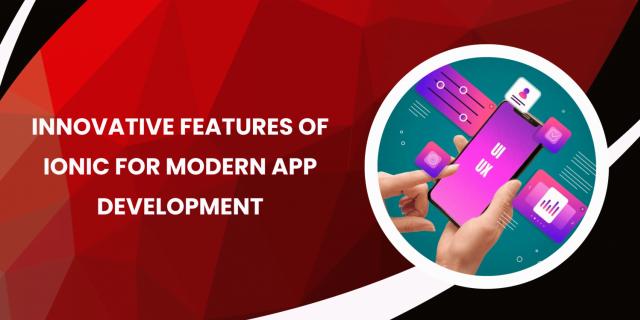Augmented Reality (AR) is revolutionizing user engagement with mobile applications. By overlaying digital information in the real world, AR provides immersive experiences that engage users like never before. The Ionic Framework, known for its robust and flexible app development capabilities, is perfectly suited for incorporating AR, transforming user experiences, and setting new standards in app design.
What is Augmented Reality (AR)?
Augmented Reality (AR) combines the physical world with digital content, enhancing real-world environments with computer-generated perceptual information. Unlike Virtual Reality (VR), which creates a completely virtual environment, AR overlays digital elements onto the real world, providing a blended view that enhances the user's perception of reality.
The Ionic Framework
Ionic is an open-source framework that facilitates the creation of high-quality mobile and desktop apps using web technologies like HTML, CSS, and JavaScript. Its key features include a comprehensive library of pre-designed components, powerful CLI tools, and seamless integration with various front-end frameworks. Ionic's versatility and ease of use make it a popular choice for developers aiming to create innovative applications.
Benefits of Integrating AR in Ionic Apps
Integrating AR into Ionic apps offers several advantages:
Enhanced User Engagement: AR adds an interactive layer to applications, making them more engaging and enjoyable.
Improved User Experience: AR provides intuitive and immersive experiences, leading to higher user satisfaction.
Competitive Advantage: Offering AR features can differentiate your app in the competitive app market, attracting more users.
Key AR Features in Ionic Apps
Real-time Object Recognition: AR can instantly identify and interact with physical objects.
Spatial Mapping: AR creates a detailed map of the surrounding environment, enabling more accurate and immersive experiences.
Interactive User Interfaces: AR enhances user interfaces, making them more dynamic and interactive.
Tools and Technologies for AR in Ionic
Several tools and technologies are available for integrating AR into Ionic apps:
ARCore by Google: Brings advanced AR features to Android platforms.
ARKit by Apple: Offers AR features for iOS devices.
Vuforia and Other AR SDKs: Third-party SDKs that provide additional AR functionalities.
Setting Up an Ionic Project for AR Development
Installing Ionic: Begin by installing the Ionic CLI.
Setting up ARCore/ARKit: Integrate ARCore for Android or ARKit for iOS into your project.
Project Configuration: Configure your project to include necessary dependencies and settings for AR development.
Building Basic AR Functionality in Ionic
Creating an AR Scene: Set up the initial AR environment.
Adding AR Objects: Incorporate digital objects into the AR scene.
Implementing User Interactions: Enable interactions between users and AR elements.
Advanced AR Features in Ionic Apps
Marker-based AR: Uses specific images or objects as triggers for AR content.
Markerless AR: Does not rely on specific markers, allowing for more flexible and dynamic experiences.
Location-based AR: Leverages GPS data to place AR content according to the user's location.
Challenges in Developing AR with Ionic
Optimizing Performance: Prioritize seamless and responsive AR interactions.
Device Compatibility: Addressing variations in AR capabilities across different devices.
User Experience Design: Creating intuitive and user-friendly AR interfaces.
Best Practices for AR Development in Ionic
Testing and Debugging: Thoroughly test AR features to ensure reliability and performance.
Cross-Platform Compatibility: Ensure your AR app works seamlessly on both Android and iOS.
User-Centric Design: Focus on creating AR experiences that meet user needs and expectations.
.
Future Trends of AR in IonFAQsic Apps
The potential for AR in app development is More:
Emerging Technologies: Stay updated with the latest AR tools and frameworks.
Innovative Features: Anticipate new AR capabilities that can enhance app experiences.
AR's Future: Delve into how AR will continually transform mobile app development.
Conclusion
Augmented Reality in Ionic apps offers unparalleled opportunities to create engaging and immersive user experiences. By leveraging the power of AR, developers can build innovative applications that stand out in the competitive app market. With continuous advancements in AR technology, the future of AR in Ionic apps is bright, promising even more exciting developments.
1. How do AR and VR differ?
AR integrates digital content with the real world, while VR immerses users in a completely virtual environment.
2. In what ways can AR improve user experiences in apps?
AR delivers interactive and immersive experiences, significantly boosting user interaction and satisfaction in apps.
3. What are the key tools for AR development in Ionic?
Key tools include ARCore for Android, ARKit for iOS, and third-party SDKs like Vuforia.
4. What are the common challenges in AR development?
Challenges include performance optimization, device compatibility, and user experience design.
5. How can I get started with AR development in Ionic?
Start by installing Ionic, setting up ARCore/ARKit, and configuring your project for AR development.



